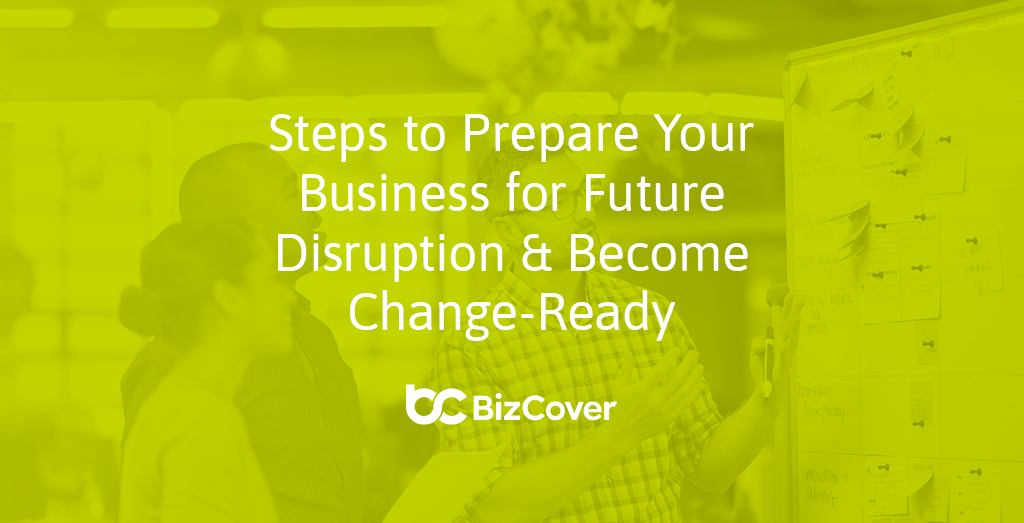Future-proofing your business: Embrace change and prepare for disruption
Change isn’t coming. It’s already here.
Whether it’s emerging tech, shifting customer demands, or evolving markets, disruption is now part of doing business. And small businesses are feeling the pressure to adapt, fast.
The good news is, You don’t need a crystal ball to stay competitive. What you need is adaptability, a team that’s on board, and a plan that doesn’t fall apart under pressure.
What is future-proofing?
Future proofing is the process of making your business resilient to change. It involves anticipating potential challenges, staying open to innovation, and having plans in place to respond quickly when disruption strikes.
Rather than trying to predict the future, future-proofing is about being prepared for it, no matter what it looks like
10 steps for becoming a change-ready business
Here are a few practical ways to get your business future-ready.
1. Recognise adaptability as a valuable asset
Firstly, recognise that your business needs to be flexible. Businesses that can quickly pivot and adapt can survive even if this era of rampant digital disruption. While business owners cannot predict the future, they can build their business to not only survive, but to thrive in times of disruption.
2. Identify potential disruptors in your industry
Create a list of disruptive changes with the help of your team. Categorise these changes into four categories based on their impact and likelihood of occurring. This is your, “change matrix”.
3. Embrace innovation and technology to help you see the warning signs
This is where you get ready for change and define the changes and early warning signs of disruption to business on the horizon. Think about what you can do right now in anticipation of pending disruption. Ask yourself these three questions:
- What are the potential consequences of the change for your business?
- How will you know when it’s time to adapt to the change?
- What you should be doing now to get ready?
To navigate business disruption successfully, it is important to embrace innovation and develop world-class tech innovation capabilities. Digital disruptions can be the most fertile ground for innovation.
They offer business owners the opportunity to reinvent themselves, find new business models, or explore uncharted markets. By integrating innovation into the core of your business, you will improve its resilience by increasing its ability to adapt to future disruption.
4. Develop a plan for change
You can clearly itemise and define your change process into four sections for each change you wish to make to prepare your business for future disruption, as follows.
5. Collaborate with other brands
Two heads (or businesses) are better than one. Teaming up with other brands can help you share resources, cross-promote, and tap into new markets. It’s a smart way to stay agile, expand your reach, and weather disruption together.
6. Provide the tools or skills required to implement the changes
This is important, especially for older employees who may be afraid of being left behind. Use formal mechanisms to reinforce the change. To encourage innovative thinking you can set up a process for employees to submit ideas. Be sure to not only reward successful results but also those that encourage learning and taking risks.
7. Focus on financial health
Stay on top of cash flow, keep a close eye on expenses, and build a buffer for tough times. Save money when you can and look for cost-effective solutions that don’t sacrifice quality. The leaner your business, the more flexibility to adapt when change hits.
8. Empower and engage your employees
Employees are the first to be affected by disruption and must deal with its effects every day. You can improve the resilience of your organization to disruption by engaging them and giving them more power. Open communication, collaboration, training, development, and recognition of innovative solutions and ideas are all required.
9. Early-warning systems are important
Changes in your business can have a variety of consequences and you will know when it is time to adapt. It could be that your competitors begin to adopt new technologies.
Act early – what can you do to prepare? You can start by identifying small, easy steps that you can do now. They won’t take much time or resources but will help you adapt when the need arises. Researching what other industries did in similar situations can inspire you to take action.
10. Start small, embrace failure, and learn from it
Big changes don’t have to happen all at once. Some of the best ideas start as small tests — a new tool, a process tweak, a limited product trial. If it works, scale it. If it doesn’t, take the lesson and try something else. The key is momentum.
And when it comes to protecting that momentum, make sure your insurance is keeping up too.
At BizCover, we take the pain out of business insurance. Compare multiple quotes, buy online and get covered in as little as 10 minutes and be on your way.
© 2025 BizCover Pty Limited, all rights reserved. ABN 68 127 707 975; AFSL 501769
This information is general only and does not take into account your objectives, financial situation or needs. It should not be relied upon as advice. As with any insurance, cover will be subject to the terms, conditions and exclusions contained in the policy wording or Product Disclosure Statement (available on our website). Please consider whether the advice is suitable for you before proceeding with any purchase. Target Market Determination document is also available (as applicable). © 2025 BizCover Pty Limited, all rights reserved. ABN 68 127 707 975; AFSL 501769.



